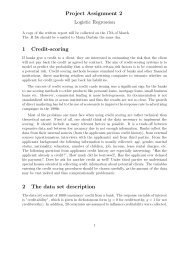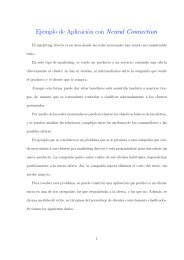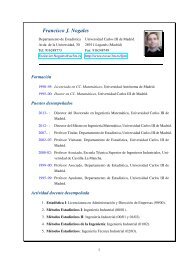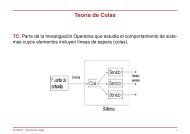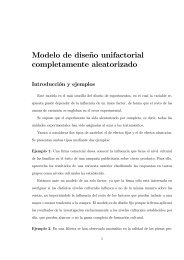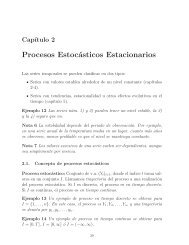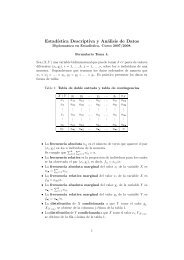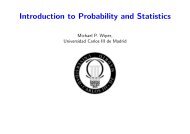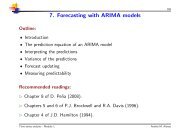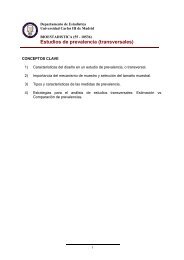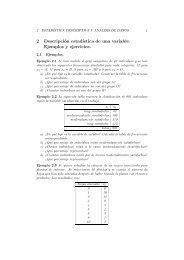Slides Chapter 1. Measure Theory and Probability
Slides Chapter 1. Measure Theory and Probability
Slides Chapter 1. Measure Theory and Probability
Create successful ePaper yourself
Turn your PDF publications into a flip-book with our unique Google optimized e-Paper software.
<strong>1.</strong>4. PROBABILITY MEASURES<br />
For this, we will first consider the collection of intervals<br />
C = {(a,b],(−∞,b],(a,+∞) : a < b}. (<strong>1.</strong>1)<br />
We start by assigning values of P to intervals from C, by ensuring<br />
that P is σ-additive on C. Then, we consider the algebra F obtained<br />
by doing finite unions of disjoint intervals from C <strong>and</strong> we<br />
extend P to F. The extended function will be a probability measureon(IR,F).<br />
Finally,thereisauniqueextensionofaprobability<br />
measure from F to σ(F) = B, see the following propositions.<br />
Proposition <strong>1.</strong>7 Consider the collection of all finite unions of<br />
disjoint intervals from C in (<strong>1.</strong>1),<br />
{ n<br />
}<br />
⋃<br />
F = A i : A i ∈ C, A i disjoint .<br />
Then F is an algebra.<br />
i=1<br />
Next we extend P from C to F as follows.<br />
Proposition <strong>1.</strong>8 (Extensionof theprobabilityfunction)<br />
(a) For all A ∈ F, since A = ⋃ n<br />
i=1 (a i,b i ], with a i ,b i ∈ IR ∪<br />
{−∞,+∞}, let us define<br />
n∑<br />
P 1 (A) = P(a i ,b i ].<br />
i=1<br />
Then, P 1 is a probability measure over (IR,F).<br />
(b) For all A ∈ C, it holds that P(A) = P 1 (A).<br />
Observe that B = σ(F). Finally, can we extend P from F to<br />
B = σ(F)? If the answer is positive, is the extension unique? The<br />
next theorem gives the answer to these two questions.<br />
ISABEL MOLINA 17



